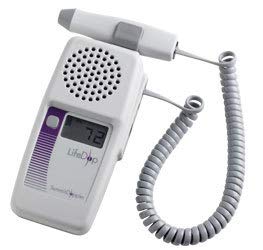Peripheral Arterial Disease
Pt age > 65 years h/o HTN, HLD, CVA, heart failure, chronic kidney disease, DM, smoking presents with calf pain/cramping during activity. Pain resolves after approximately 10 minutes rest. Diminished pulses, pallor, hair loss, and non-healing gangrenous wound on lower extremities; ankle-brachial index 1.3 < ABI < 0.9.
Acute limb ischemia due to arterial thrombosis. James Heilman, MD - Own work.
Obtain CBC, CMP, BNP
Lipid panel shows HDL < 50 mg/dL
EKG shows Q waves and ST segment changes
Treatment
Start supervised exercise therapy program
Start aspirin 81 mg qd, ramipril 2.5 mg qd x 1 week and then 5 mg qd, atorvastatin 80 mg qd
Continued pain s/p supervised exercise therapy and no h/o heart failure: Start cilostazol 100 mb BID; pt counseled about risk for dizziness, GI distress due to vasodilatory effects
Consults/Referral
Refer for surgical revascularization for cases of
Lifestyle limiting claudication with insufficient response to exercise/medical therapy
Ischemic rest pain x 2 weeks
Admit to hospital for emergent vascular surgery within 4 to 6 hours in cases of limb-threatening ischemia as indicated by painful, pale/dusky colored and cold extremity with absent pulses, motor weakness, sensory impairment
Pt advised to stop smoking and offered smoking cessation therapy
Notes
5 MHz vascular Doppler probe used for ABI
2 MHz fetal Doppler probe used for prenatal care after 14 WGA
Epidemiology
Affects 50% of patients age > 85
Only 10% of PAD patients experience claudication
Diagnosis
Ischemic rest pain generally occurs when feet are elevated and resolves in the dependent position, e.g. sleeping pt must hang feet over side of bed
Ankle-brachial index (5-8 MHz vascular probe not 2-3 MHz fetal probe)
94-97% sensitivity for detecting angiographically significant stenosis
Values > 1.3 suggest non-compressibility; use toe index with > 0.7 considered normal
HDL < 40 and 50 mg/dL in males/females receptively is associated with increased risk of death
Consider BNP to r/o heart failure before starting cilostazol
Treatment
Dual antiplatelet therapy is generally not more effective than aspirin
Heart Outcomes Prevention Study: ACE (ramipril) or ARB (telmisartan) reduced MI, stroke, and mortality in patients with PAD and no h/o heart failure
Statin NNT ~ 5 to reduce risk of long-term adverse outcome
Supervised exercise therapy can often be performed at a physical therapy center; otherwise, pt should walk until pain onset and then rest until pain subsides
Cilostazol contraindicated in heart failure


